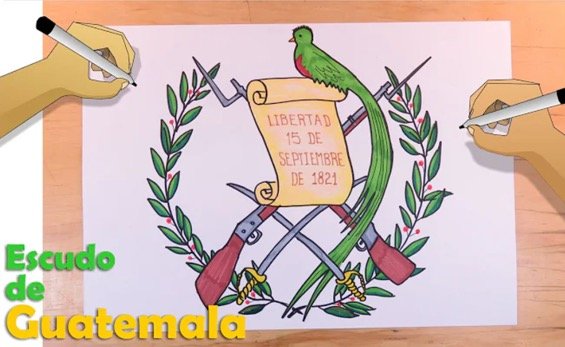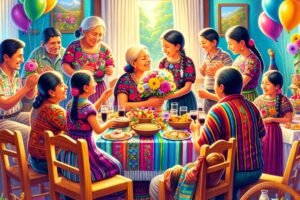The coat of arms of Guatemala

The Guatemalan Coat of Arms is more than a mere symbol; it is an emblem loaded with history and meaning, encapsulating the values and aspirations of a nation.
This symbol has been a silent witness to the changes and challenges throughout Guatemalan history, and continues to be a source of pride for Guatemalans, both at home and around the world.
History of the Guatemalan Coat of Arms
The current coat of arms was officially adopted on November 18, 1871, but its history and evolution reflect Guatemala’s turbulent political and social changes.
Originally, the coat of arms has gone through several modifications since the time of independence, each adding elements that reflect the identity and ethos of the nation at different times.
The adoption of the coat of arms with the quetzal, the laurel wreath and the crossed arms symbolizes not only the independence and sovereignty of Guatemala, but also peace and strength.
These changes were not merely aesthetic; they represented a Guatemala that, over the centuries, sought to consolidate its identity and values in an emblem recognizable by all its citizens.
Analysis of the Elements of the Coat of Arms
The Guatemalan Coat of Arms contains several elements full of symbolism that intertwine to tell the history and values of the nation:
- The Quetzal: Perched atop the shield, the quetzal is not only Guatemala’s national bird, but also a powerful symbol of freedom and autonomy. This bird, which dies in captivity, represents the Guatemalan spirit of independence.
- The Laurel Wreath: Surrounding the shield, the laurel wreath is a classic symbol of victory and honor. In the Guatemalan context, it commemorates the achievement of independence and respect for republican values.
- The Crossed Arms: Two rifles and two crossed swords behind the shield represent the country’s willingness to defend its sovereignty. In addition, they suggest the importance of law and order in the foundation of a just society.
- El Pergamino: Under the quetzal, a scroll inscribed with the date of Central America’s independence, September 15, 1821, underscores the importance of this event in national history.
- The Weapons Motif: Complementing the rifles and swords, the weapons recall past conflicts and the struggle to maintain the country’s peace and autonomy.
The Coat of Arms Today: Use and Significance
Today, the Guatemalan Coat of Arms figures prominently on official documents, government buildings, and is a constant presence at national celebrations, underscoring its role as custodian of national identity and heritage. For Guatemalans in the diaspora, the shield serves as a daily reminder of their roots and a symbol of national unity and pride.
The presence of the coat of arms at events and community gatherings abroad is a call to remember and celebrate Guatemala’s rich history, fostering a sense of belonging and cohesion among Guatemalans, no matter where they are.
The Guatemalan Coat of Arms is more than a heraldic design; it is an emblem that encapsulates the history, culture and ideals of a country. Their study and appreciation allow us to better understand the values that have shaped the Guatemalan nation and the importance of preserving these symbols that strengthen our common identity.
By celebrating and respecting our coat of arms, we reaffirm our connection to Guatemala and ensure that the legacy of our ancestors continues to inspire future generations.






